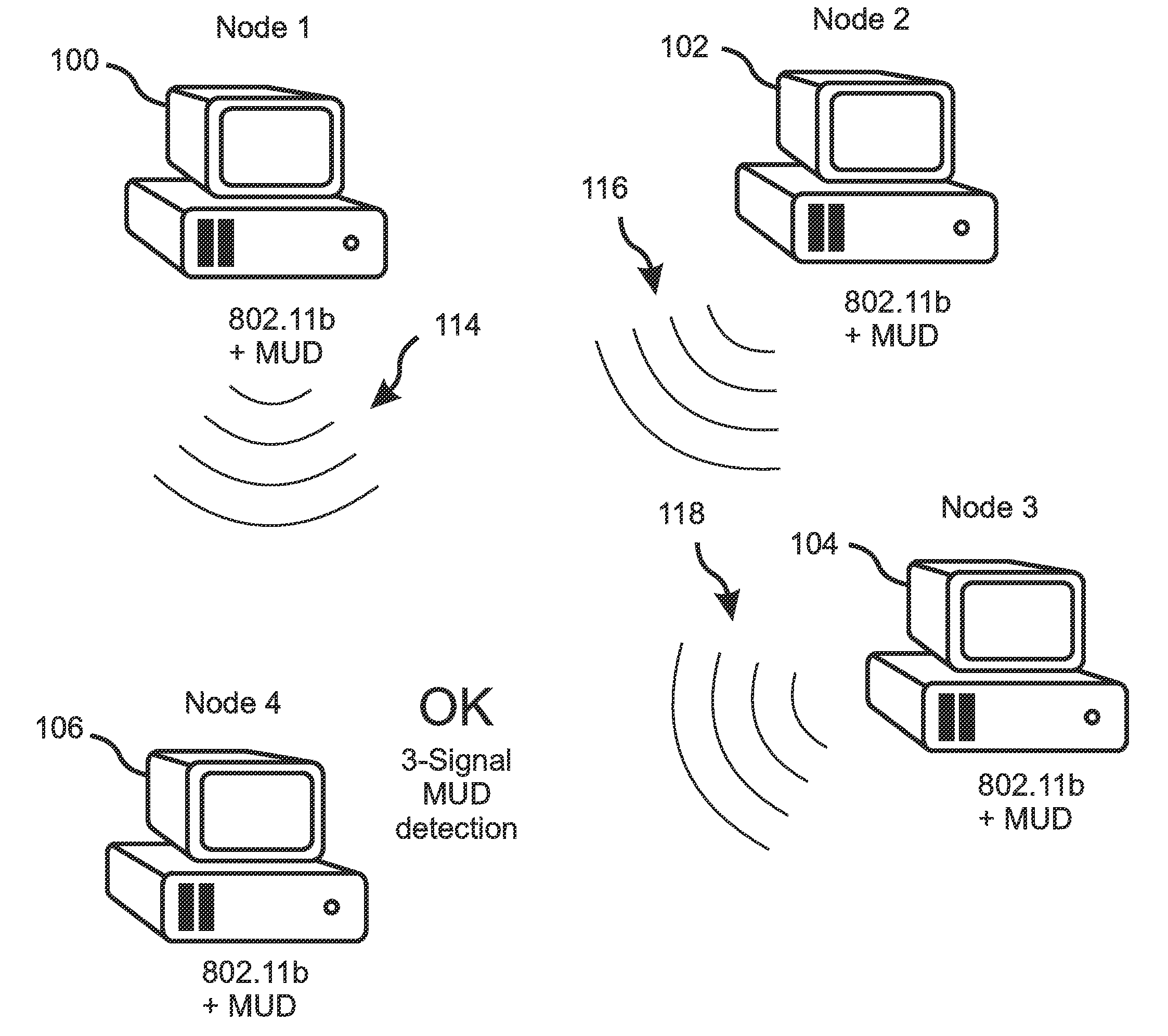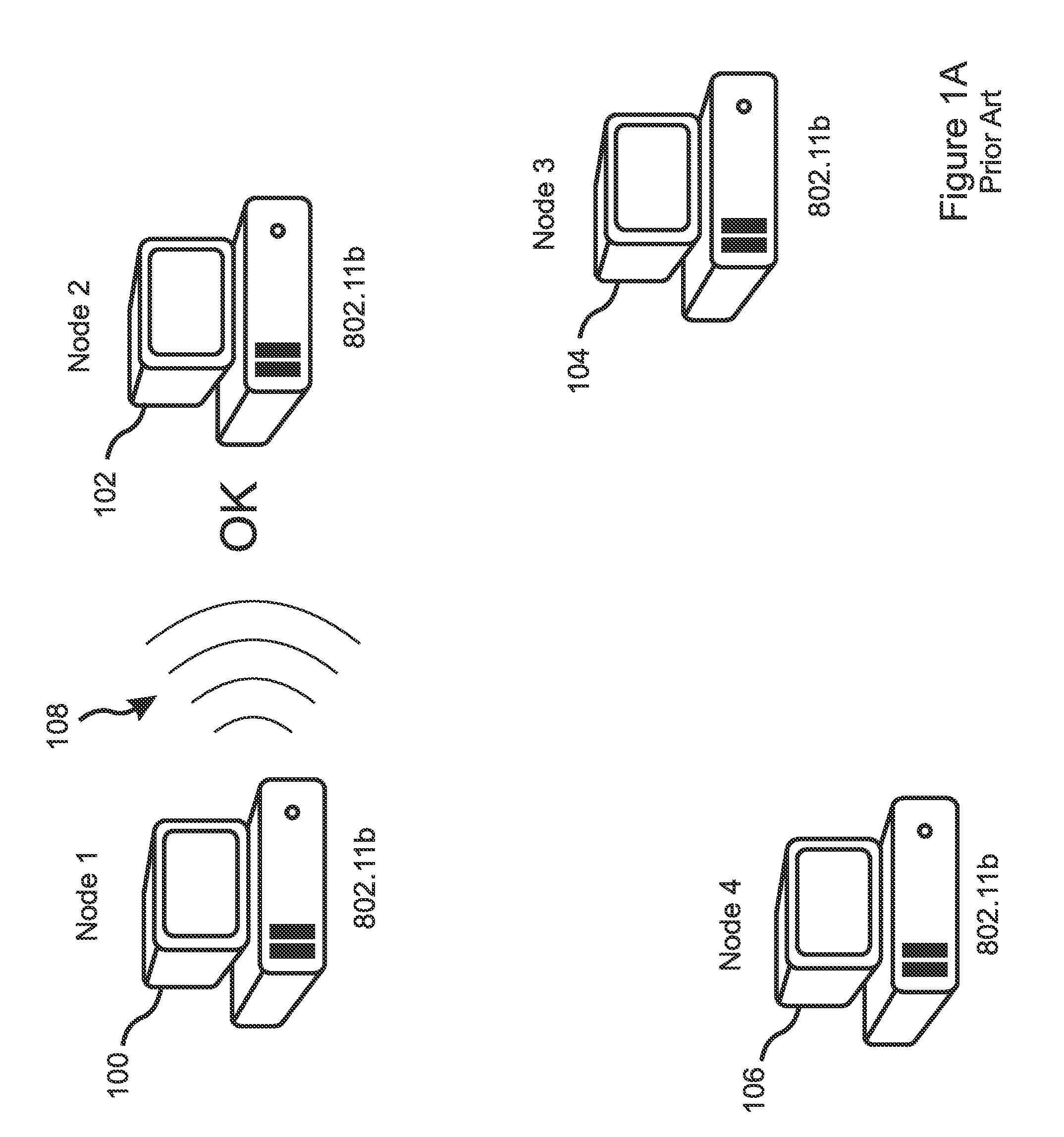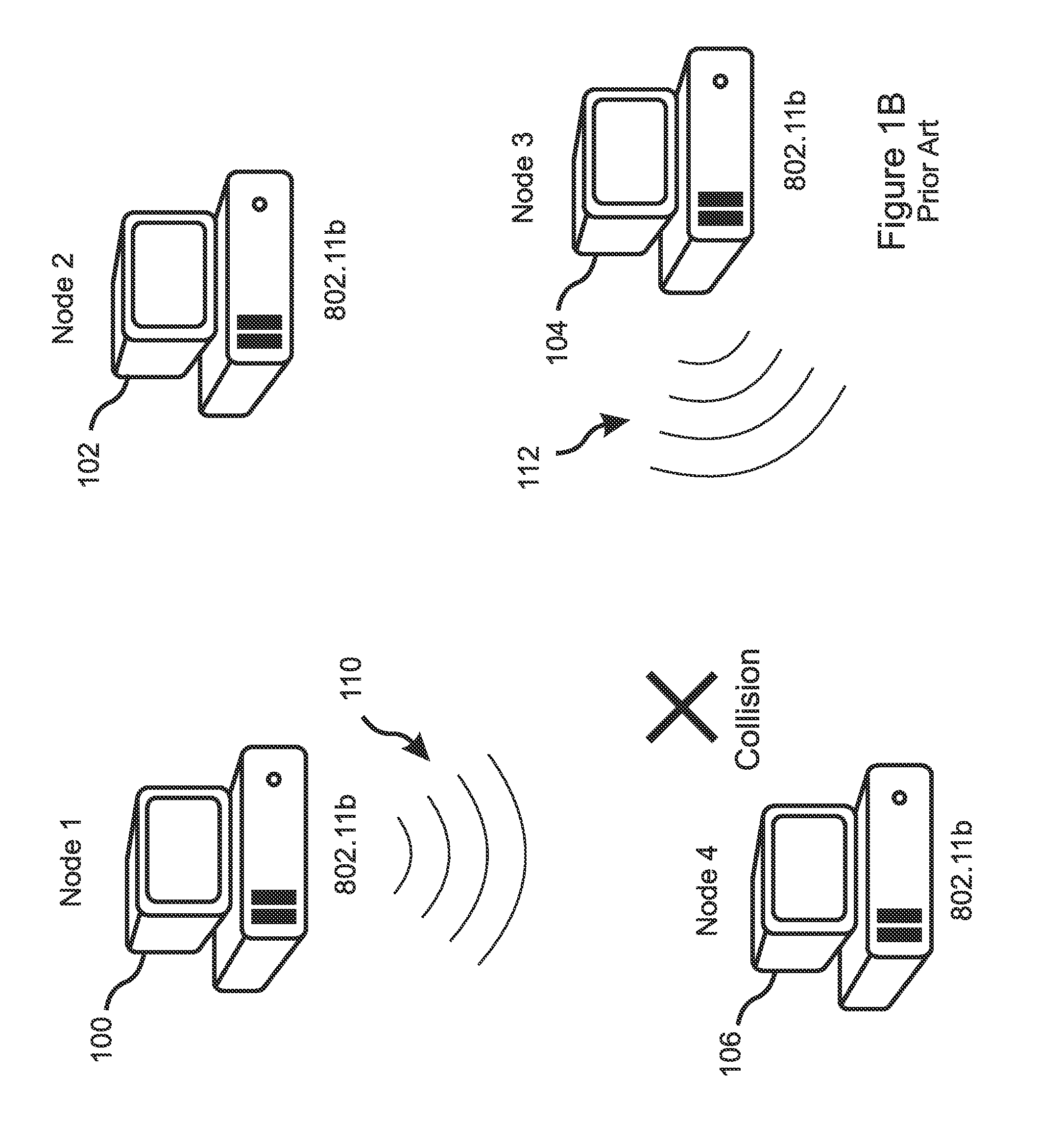Media access control protocol for multiuser detection enabled ad-hoc wireless communications
a multi-user detection and media access control technology, applied in wireless communication services, wireless commuication services, electrical equipment, etc., can solve the problems of high implementation costs of point-to-point communication systems, burden on configuration, and difficulty in scaling, so as to increase the communication capacity of wireless ad hoc networks.
- Summary
- Abstract
- Description
- Claims
- Application Information
AI Technical Summary
Benefits of technology
Problems solved by technology
Method used
Image
Examples
Embodiment Construction
[0033]In FIG. 1A, a typical wireless ad hoc communication system of the prior art is illustrated, wherein four “nodes”100, 102, 104, 106 are in communication through a wireless 802.11b network. For simplicity, the nodes are depicted as desktop computers in FIG. 1A, but it is understood that each node can represent any network compatible device, such as a laptop computer, a mobile phone, a PDA, and such like. FIG. 1A specifically illustrates a packet 108 being sent by one of the nodes 100 to another node 102. No other communication is attempted on the network during transmission of the packet 108, and the packet 108 is received successfully by the second node 102. However, the communication rate is slow, because the other nodes 104, 106 must refrain from transmitting until the packet 108 transmitted by the first node 100 is received by the second node 102.
[0034]FIG. 1B illustrates the network of FIG. 1A, wherein two of the nodes 100, 104 have attempted to transmit packets 110, 112 si...
PUM
 Login to View More
Login to View More Abstract
Description
Claims
Application Information
 Login to View More
Login to View More - R&D
- Intellectual Property
- Life Sciences
- Materials
- Tech Scout
- Unparalleled Data Quality
- Higher Quality Content
- 60% Fewer Hallucinations
Browse by: Latest US Patents, China's latest patents, Technical Efficacy Thesaurus, Application Domain, Technology Topic, Popular Technical Reports.
© 2025 PatSnap. All rights reserved.Legal|Privacy policy|Modern Slavery Act Transparency Statement|Sitemap|About US| Contact US: help@patsnap.com



